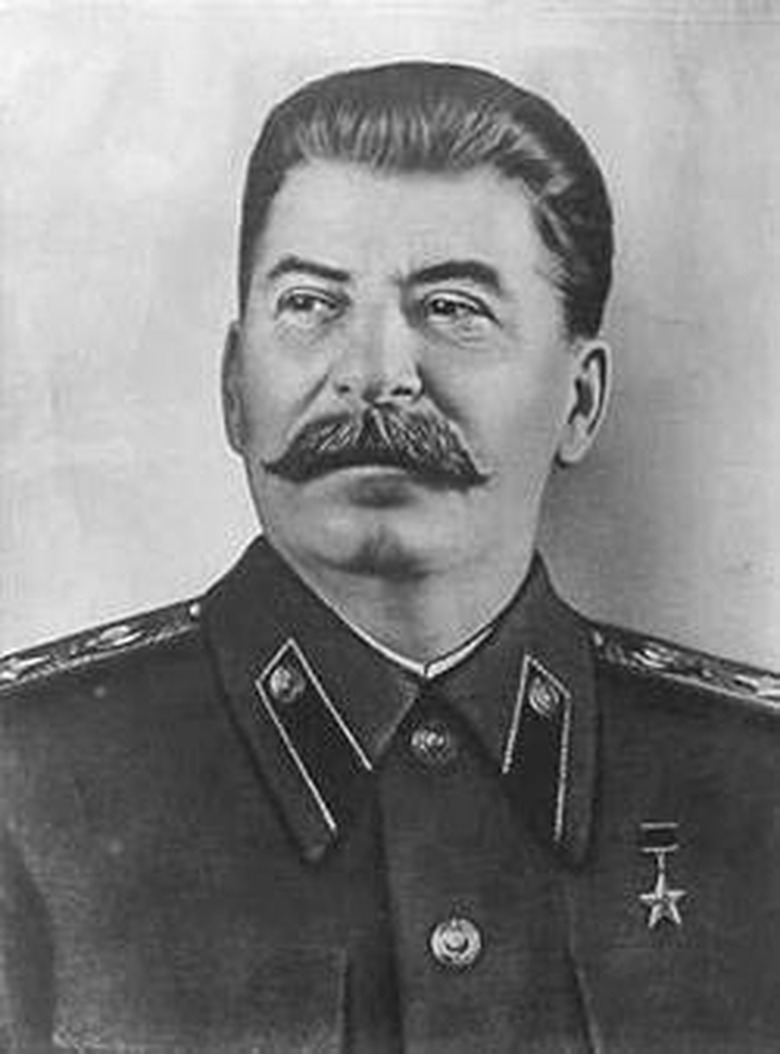Russian Famine Of 1891
In the decades leading up to the Russian famine of 1891, the country was actually a major grain exporter. In fact, farmers exported 15 to 20 percent of their grain crop during the late 1880s, according to historian Stephen G. Wheatcroft's account of prerevolutionary Russia. This abundance dropped sharply and quickly, leading to a significant loss of life that would ultimately alter the course of Russian history.
A Cause for Hunger
A Cause for Hunger
Grains composed 75 percent of a typical Russian's diet in 1891, according to Wheatcroft. The famine resulted from this dietary staple being in scare supply due to a combination of factors. Chiefly, a serious drought affecting the Volga River region and the country's central agricultural areas brought grain yields down significantly in 1891. This, coupled with the poor yields of 1889 and 1890 that meant many reserve supplies had already been depleted, severely limited the country's food supply. To put the supply limits in perspective, Wheatcroft reports that Russian farmers produced about 28.76 million tons of grain in 1891, compared to the yields of about 35 to 40 million tons in the mid to late 1880s.
Conditions of Famine
Conditions of Famine
Roughly 13 million out of 35 million citizens living in the famine area suffered from crop failure, according to historian J.Y. Simms. In addition to the negative economic effects from the suspension of grain exports, Russian peasants felt the effects of the famine in lower wages, a decrease in living standards and a marked rise in debt. Prerevolutionary Russia historian Richard G. Robbins reports that more than 303,000 people died due to the famine in 1892 alone, with total mortality estimates ranging from about 375,000 to 400,000 people over the period of 1891 to 1892.
The Spread of Relief
The Spread of Relief
Despite the massive death toll, relief efforts provided by Russia's czarist government kept the country as a whole from suffering mass starvation and helped prevent a complete economic collapse. Relief efforts distributed food to over 5 million people between October and December 1891, reaching more than 11 million by early summer 1892. Efforts were curbed during the 1892 harvest, which saw grain yields of 30 percent above the seasonal average.
A Historical Lens
A Historical Lens
The famine of 1891 and 1892 was the last severe famine to hit Russia. Despite the government's relief efforts, the famine opened the czarist regime to criticism and anger that eventually led to Russia's Marxist revolution, which favored populism over autocracy. The first sparks of revolution — the peasant revolt of 1905 — stemmed in great part from what the peasants suffered due to the famine. In his book "Global Rift: The Third World Comes of Age," L.S. Stavrianos considers the famine a key element in Russia's economic decline, noting that it ended the country's period of post-Crimean War prosperity.
References
- Economy and Society in Russia and the Soviet Union, 1860-1930; Linda Edmondson, Peter Waldron
- The Slavonic and East European Review: The Economic Impact of the Russian Famine of 1891-92: J.Y. Simms
- George Mason University: Lenin and the First Communist Revolutions, VII
- Global Rift: The Third World Comes of Age; L.S. Stavrianos
Cite This Article
MLA
Ketchum, Dan. "Russian Famine Of 1891" sciencing.com, https://www.sciencing.com/russian-famine-1891-11151/. 24 April 2017.
APA
Ketchum, Dan. (2017, April 24). Russian Famine Of 1891. sciencing.com. Retrieved from https://www.sciencing.com/russian-famine-1891-11151/
Chicago
Ketchum, Dan. Russian Famine Of 1891 last modified March 24, 2022. https://www.sciencing.com/russian-famine-1891-11151/
